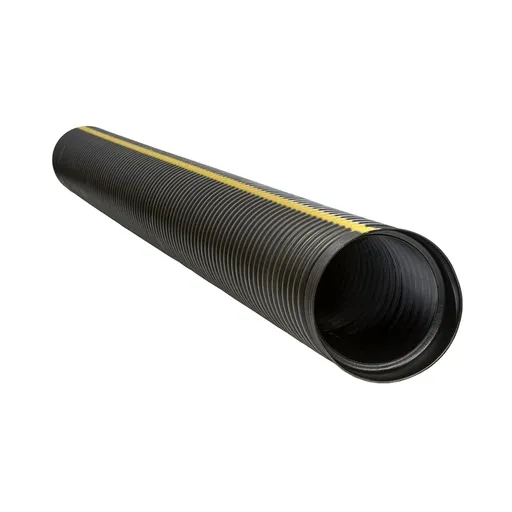Efficient, long-lasting, and budget-friendly drainage systems depend largely on the choice of materials, and HDPE is arguably the most appropriate one. Today, High-Density Polyethylene (HDPE) culvert pipes are holding the top position, outperforming other products in various applications. This article aims to explain the benefits of HDPE culvert pipes and the issues faced in modern-day infrastructure projects. HDPE pipes are the only type of pipe that meets the demands of modern drainage systems because of their lightweight and ease of installation, as well as their extraordinary durability and chemical resistance. Let us look at the construction and environmental management challenges faced today, so we can appreciate the reason why HDPE culvert pipes are the solution.
Material Properties and Performance
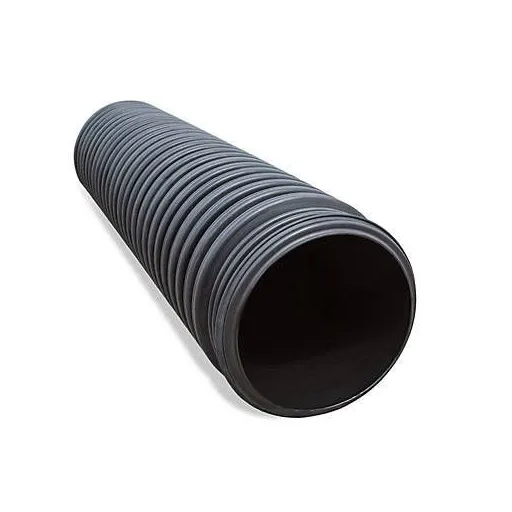
Durability of Corrugated HDPE Pipe
The most significant strength one can attribute to Corrugated HDPE pipes is their durability, which comes from rigidity to corrosion, abrasion, and chemical wear. HDPE does not rust or chemically degrade in challenging conditions like metal and concrete, and is immune to the aggressive acidic or alkaline soils and harsh climatic conditions. HDPE pipes, as a result, can retain their strength and shape to pipes over the span of many decades, even with constant wear and tear over demanding conditions.
Another key aspect that enhances the life of HDPE pipes is their high impact resistance and flexibility. HDPE pipes do not break or crack when subjected to external forces like soil loadings or changing topographies. Furthermore, HDPE pipes can elastically deform under stress, providing enhanced durability and making them suitable for areas that have constant ground movements or vibrations. HDPE pipes are guaranteed to perform for a very long time, even in difficult geological conditions.
Key Benefit: Corrugated HDPE pipes, if installed and maintained properly, will last 50 to 100 years, depending on the application and environmental conditions. This longevity makes HDPE pipes a cost-effective decision to meet modern infrastructure needs.
Lastly, the HDPE is lightweight, which makes it simpler to transport and install. This also lowers the chance of it being damaged in transport or installation, which can happen with heavier materials. This feature, when combined with HDPE’s strength and resistance to environmental stress cracking, makes it an ideal and robust solution for drainage systems, culverts, and other infrastructure.
Cost-Effectiveness Compared to Concrete and PVC
Evaluating the economics of HDPE pipes against those made of concrete and PVC, HDPE incurs fewer expenses not only in its base price but also in installation and transportation. The lightweight of HDPE pipes not only makes them cheaper to transport but also cheaper to install compared to concrete pipes, which are heavier and require specialized equipment. The lower transportation and installation costs lead to a reduction in the overall project costs.
Further to that, HDPE pipes are more enduring and stand up better to different environmental challenges, including changes in the soil, corrosion, and freeze-thaw cycles. These challenges are more expensive to fix in both concrete and PVC systems and can lead to pipe replacement. While PVC pipes are lightweight and corrosion-resistant, they are less flexible than HDPE and may sustain more damage when exposed to shifting loads and extreme pressure, leading to higher maintenance costs as time goes by.
From the perspective of lifecycle costs, HDPE pipes are less expensive since they do not need to be replaced or maintained as often as concrete or PVC pipes. Taking into consideration other aspects of infrastructure developments, HDPE pipes, unlike the other two pipes, are recyclable and eco-friendly, and thus comply with the long-term infrastructure and budgetary plans, which makes their usage in other application areas very favorable.
Environmental Advantages of Using Polyethylene
Polyethylene combines several environmental benefits while being recyclable, having a lower carbon footprint, and impacting ecosystems less. Below is a detailed list of its top five environmental benefits:
- Recyclability: As with all materials, proper recycling is essential. Both high- and low-density polyethylene (HDPE and LDPE) can be reused after post-consumer processing for piping, containers, and construction materials. Recycling decreases the need for new materials and cuts waste in landfills. Research shows that recycling polyethylene can decrease HFC emissions by up to 30%.
- Energy Efficient Production: In comparison with glass or aluminum, the production of polyethylene is much more energy-efficient. The production of 1 kg of polyethylene requires around 2.0-2.5 MJ, a figure which is much smaller in comparison to the 200+ MJ required to produce 1 kg of aluminum. This is a benefit towards its production as there is less environmental impact.
- Lightweight Nature Reducing Transportation Impact: Fuel needed for transportation is lower because of polyethylene’s lightweight properties. HDPE pipes’ energy requirements for transportation to installation sites are lowered, along with associated carbon emissions. The weight of products made of polyethylene is 85% less than comparison of steel or concrete, which means a huge cut is made in the logistics energy expenditure.
- Minimal Environmental Leaching: Polyethylene is one of the few materials used in either packaging or piping that is inert and does not leach any harmful toxins. Such metals or chemicals are common in soils or waters, and ecosystems. This ensures that ecosystems and groundwater are not harmed and is an inert approach towards leachate environmental safety.
- Longevity and Reduced Waste: Polyethylene’s durability ensures it can last between 50 to 100 years. Its endurance not only ensures minimal breakdown during its service life, but also ensures minimal waste and microplastic generation, as opposed to less stable alternatives. Less frequent replacement due to sturdiness also lowers the demand for natural resources.
All these benefits position polyethylene as a commendable development choice, given its broad range of functionality in industrial and consumer products and its adherence to ecological principles.
Installation Methods for HDPE Culvert Pipe
Step-by-Step Installation Guide
- Step 1: Site Assessment
Start by examining the site of the installation for structural and grading criteria compliance. Remove any debris, unwanted vegetation, and other obstruction materials from the site. Ensure the area is properly draining to prevent waterlogging during the installation period. The trench should be free of water, and its dimensions (width, depth, and slope) should be in agreement with the design specs.
- Step 2: Trench Excavation
The trench width should be excavated to not less than 1.5 times the outer diameter of the pipe to meet the alignment requirements of the pipe. The depth of the trench should be excavated to the depth of the pipe, the pipe diameter, and additionally, the bedding materials. The bedding material depth is a minimum of 6 inches and is mainly used to optimally distribute the load.
- Step 3: Bedding Installation
Provide compacted granular material such as gravel, crushed stone, or any granular material in the form of bedding to enable support for the pipe. The bedding material is supposed to be compacted to a maximum of 95% of the maximum dry density as per ASTM D698 standards to prevent any settlement and maintain alignment under the pipe.
- Step 4: Pipe Placement
Use proper lifting equipment to place the HDPE culvert pipe into the trench to avoid any damage. Proper care should be put in place to align the sections along the trench line. Manual tools or laser guidance should be used, especially in gravity flow applications where high accuracy is required.
- Step 5: Joint Assembly
If the pipe is of bell-and-spigot type, use pipe plugs, gaskets, or any other form of sealing to cover the joints. Ensure that the seals and connectors are clean and free of any form of debris. Apply manufacturers’ guidelines while assembling the joints; use of lubricants is to be done where required so as to enable tight and firm sealing.
- Step 6: Backfilling
Backfilling should begin with the placement of select granular material up to the pipe’s springline. The material should be compacted in increments on either side of the pipe to support the pipe laterally and eliminate voids. The initial backfill should be extended to at least 12 inches above the pipe crown. Compaction equipment suitable for confined spaces should be used to achieve the same density as the bedding layer.
- Step 7: Final Cover and Inspection
Complete backfilling with the remainder of the trench material. Compact the materials in layers to prevent settlement. The final cover should be adequate for protection against external loads, including vehicular traffic. Inspection to verify structural integrity, joint alignment, and verification of compaction of materials should be conducted. Where compliance is necessary, deflection testing using mandrels and pressure testing for closed systems should be conducted.
Following the steps outlined above, the process of installing HDPE culvert pipe guarantees durability in the long run, reliability in performance, and conformity to set engineering and environmental standards.
Best Practices for Proper Installation
Careful planning and execution of the installation process is paramount to achieving the full functionality and durability of an HDPE culvert pipe system. Consider starting with a site evaluation to anticipate any instability in the soil, high water table, or high load demands. The trench should be excavated to the desired depth with a width that allows for pipe placement and side-fill compaction. A consistent bedding layer of compacted granular material should be maintained as it is essential to the support of the pipe and to reducing stress.
To achieve the desired hydraulic flow, correct pipe placement must be ensured to eliminate angular misalignment. Side and back fill materials must comply with project requirements, which usually specify the use of processed aggregates or low plasticity soil to enable proper compaction and load distribution. Backfill compaction should also be ensured to the appropriate density, usually achieved by compaction in incremental lifts of not more than 8 inches to remove voids.
Attention is required when connecting joints to ensure a water or pressure-tight seal as is necessary. Before fitting, the joint interfaces should be inspected and cleaned to remove debris or any other contaminants. To ensure system integrity and leak detection, testing under hydrostatic or pneumatic pressure is highly recommended after completion of the installation.
Also recommended is post-construction inspection, using CCTV inspection or mandrel deflection testing, to confirm that the pipe meets the structural and hydraulic design specifications. Proper risk mitigation over the life of the asset requires that maintenance be scheduled regularly. Adhering to these procedures, with consideration of new industry standards, ensures that engineering standards are met and that the HDPE culvert system functions effectively over the long term.
Potential Challenges During Installation
The proper management of technical and logistical challenges in the installation of HDPE culvert systems is essential for complying with engineering standards and ensuring long-term functionality. The most significant concern is the improper bedding preparation, which weakens the structural support of the pipe. To address this concern, subgrade soils need to be properly compacted, and engineered fill needs to replace all unsuitable material in accordance with project specifications.
- Joint Alignment Issues: Use laser or string alignment tools to guarantee proper pipe placement along the gradient
- Overburden Load Stress: Moderate pipe loads with appropriate backfill materials and compaction per ASTM D2321 guidelines
- Environmental Factors: Address elevated water levels with temporary dewatering or ballast weights during placement
- Weather Conditions: Extreme temperatures may require specialized equipment and precautions for HDPE material handling
To solve these problems, the company needs to have adequate quality control, experienced workers, and the ability to adjust to onsite conditions as they arise. The use of advanced monitoring equipment, such as stress-strain analysis in real-time or trenchless methods, further increases the chances of a successful installation. The HDPE system’s performance and reliability depend on having a plan in place and following the relevant standards to the letter.
Maintenance and Troubleshooting
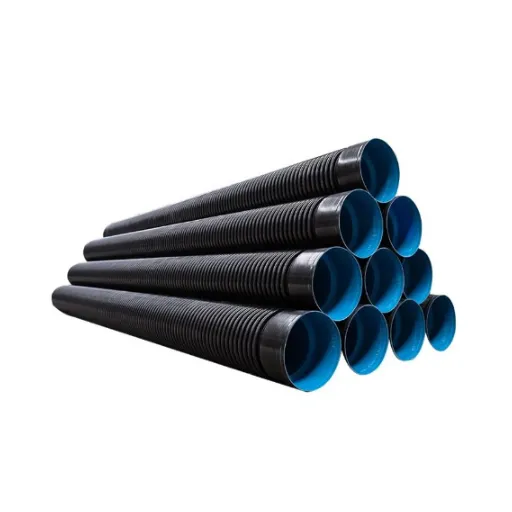
Maintenance Tips for Longevity
Maintaining an HDPE pipeline in good working order over the years requires upkeep and foresight in maintenance. Start with regular check-ups to spot developing problems like stress cracks, weak joints, or deformation from external pressures. Look for areas with hidden damage by using sophisticated equipment like ultrasonic scanning or infrared thermography, rather than taking the pipeline apart.
Keep the pipeline clean at regular intervals to avoid material deposits that lessen flow capacity or may cause abrasion inside the pipeline in the long run. Use HDPE-specific cleaning tools, such as pigging systems, to ensure minimal damage to the pipeline during cleaning.
In addition, keep track of environmental changes that might affect the system, such as temperature changes, UV light exposure, or changes in the soil. Automated comprehensive pipeline systems can continuously track the pipeline’s functioning and alert if there is a sudden change or strain, allowing for instant action. Also, consult and follow the manufacturer’s maintenance and other relevant professional guidelines to ensure system effectiveness and reliability. Observing these guidelines ensures an HDPE system functions optimally with less risk of unexpected outages.
Common Issues and How to Address Them
Leaks and Joint Failures
Leaking joints are perhaps the most frequent issue reported with HDPE. Pipes that aren’t properly aligned, those that have been fused with inadequate pressure, or those that have been fused inadequately can all result in joint leakage. To mitigate joint leaks, be sure to fuse all the joints with appropriate fusion techniques such as butt fusion or electrofusion while following all technical and fusion guidelines. Make it a point to conduct periodic inspections and pressure tests to detect weak joints earlier and avoid the collapse of the entire system due to joint failure.
Environmental Stress Cracking
Harsh chemicals, prolonged mechanical stress, UV radiation, and HDPE stress cracking have all been linked to HDPE Pipes. To protect the pipes from UV damage, apply UV-resistant coating, or bury the pipes. In addition, use form HDPE that is rated for chemical compatibility with the fluid it will carry to further minimize risks. Perform regular stress and routine analysis on the structures to monitor and evaluate areas that are more prone to cracking failures.
Blockages and Residue Build-Up
Blockages are most often the result of pipeline debris or the settling of materials in transport. The use of pigging systems or hydrojetting for cleaning ensures the flow is not blocked and is maintained. The use of strainers at pipeline inlets also helps lower the amount of solids entering the system. The use of flow monitoring sensors helps gather information that can be used to determine and take corrective action for areas with a tendency to build up sediments.
Thermal Expansion and Contraction
Hot HDPE materials are known to expand and contract. There is the possibility of pipeline deformation because of subsequent material contraction. Including expansion joints or flexible fittings within the system design addresses these dimensional changes. A detailed thermal mapping during design can greatly enhance the ability to plan for changes in the operating temperatures.
Abrasion and Wear
Internal erosion from abrasion is common to pipelines and results in a shortened service life for the system. Consider HDPE pipes with abrasion-resistant linings or multilayered pipe constructions as a solution for such applications. Visually or ultrasonically inspect the pipes periodically to monitor the erosion and ensure the timely replacement of damaged sections.
The above HDPE pipeline issues stem from either insufficient design or installation practices, or a lack of proper monitoring and maintenance procedures. Therefore, integrating meticulous design, proper installation, as well as continuous monitoring and maintenance best practices ensures long-term system reliability and performance.
Ensuring Optimal Performance Over Time
Ensuring the operational integrity of HDPE pipelines takes a comprehensive approach informed by advanced practices and established standards. Critical actions include scheduled ultrasonic testing to identify early pipeline fatigue, erosion, or mechanical strain. Using real-time monitoring systems that identify pipeline temperature and pressure changes is equally vital in preventing pipeline breakdown. Such systems depend on sophisticated sensors and data loggers to gather and analyze pipeline operation metrics and issue timely warnings.
In addition, choosing HDPE materials that meet premium standards and specific environmental and operating challenges is vital to prolong the pipeline’s service life. To address shortcomings during installation, it is necessary to engage licensed installers with expertise in fusion methods. Fusion of joints through validated, stringent procedures eliminates the chance of weak joints and promotes lasting joints.
Removing deposits built up over time that may hinder flow can be done with pigging and other periodic cleaning methods. When pigging and cleaning are supplemented with system-wide recordkeeping and performance evaluation, the system’s integrity is preserved in the long run and is in line with the governing regulations.
Industry-Specific Applications of HDPE Culvert Pipe
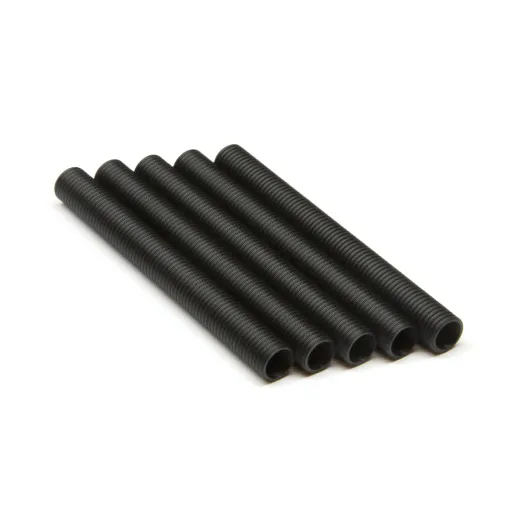
Applications in Agriculture
Modern agriculture is increasingly reliant on the high-density polyethylene (HDPE) culvert pipes because of their robust nature, affordability, and resistance to ecological hazards. Here is a summary of their five primary uses in agriculture and how they are beneficial:
Irrigation Systems
These pipes are critical to irrigation infrastructures, which allow for the proper distribution of water in large farms. HDPE pipes have a smooth interior surface that reduces frictional losses, enabling a higher flow rate and saving energy. Research indicates that the implementation of HDPE pipes can curtail water loss by 30% in comparison to older methods.
Drainage Systems
In order to protect the soil from erosion, PDM culvert pipes are used to collect and drain excess water. This is accomplished by excess water drainage, which is essential to combat waterlogging. Their pipes are also used in drainage systems due to their upkeep of agricultural productivity, due to their erosion resistance, which is maintained even through saline erosion.
Livestock Watering Systems
HDPE pipes are utilized in the construction of sturdy and hygienic water supply infrastructure for livestock. The non-toxic, UV-resistant materials guarantee the provision of clean water, which is essential to the upkeep of livestock and their efficient production.
Wastewater Management
Controlling the wastewater and runoff is vital in halting the pollution of the adjacent water reserves. As part of the filtration and wastewater collection systems, HDPE culvert pipes are installed to carry away wastes from the farmlands to safer places.
Manure Management Systems
The use of HDPE pipes in the handling of manure systems helps in the transportation and distribution of liquid fertilizers. Their resistance to chemicals makes them compatible with different fertilizers, hence no wear and tear and low way of upkeep in the long run.
These uses underscore the multifunctionality of HDPE culvert pipes to not only meet the widespread demands of agricultural systems but also to enhance their ecological and operational efficiency.
Use in Construction Projects
The use of HDPE pipes is beneficial in almost every industry for parceling out flexible, durable, and environmentally stress-resistant materials. This makes HDPE pipes far better materials to use compared to concrete and metal. The five major uses of HDPE pipes in construction are as follows:
- Stormwater Drainage Systems: Because of its flow capacity and ability to withstand extreme weather, HDPE piping is suitable for stormwater management and drainage. The smooth surface of HDPE pipes allows them to retain as much as 95% of their initial flow capacity, which has as of now been proven through studies conducted over 50 years.
- Sewer and Wastewater Systems: Unlike metal pipes, HDPE pipes do not scale and are immune to corrosion from acidic or chemical-laden flows. As such, their use in sewage and wastewater transport systems is ideal and greatly encouraged. In sewer applications, proper use of HDPE pipes could potentially see the pipes last as long as a century, which is great for the industry.
- Potable Water Distribution: HDPE pipes are used to distribute drinking water as they meet all the health safety requirements. In addition, there is a very low chance of contamination involving these pipes as they are made from inert materials. Studies show that HDPE water pipelines curb water loss from leaks by almost 40% compared to other pipe materials.
- Underground Cable Protection: HDPE pipes provide electrical and communication cables with the necessary protection against environmental threats, such as moisture and abrasive soils. Their installation is also cost-effective as their flexibility allows for easier installation even in difficult terrains, lowering installation costs by as much as 20%.
- Geothermal and District Heating Systems: The use of HDPE pipes alongside geothermal applications and district heating projects stems from their excellent thermal resistance and leak-proof joints. Their energy transmission is dependable, which adds to their sustainability in modern energy systems.
The applications of HDPE piping in construction replace modern cost-inefficient systems, thus providing environmentally sustainable solutions and with ease of use.
Municipal Infrastructure Applications
Due to their long service life, HDPE pipes are in demand for infrastructure projects because they provide a sustainable solution. The cost of maintenance is low, and the pipe systems are used for a variety of urban projects. Their use is important to address the requirements of the cities, especially in the long run.
- Water Distribution Units: The use of HDPE pipe for food-grade water is universal. The reason is that they and their fittings are immune to corrosion and have a smooth interior, which helps in minimizing frictional losses. They also have a long service life of (what is considered) over 50 years (with appropriate design and installation practices). This durability and safety guarantee the proper delivery of potable water.
- Sewage and Wastewater Disposal: The HDPE pipe’s properties concur with the sewage and wastewater disposal piping demands. The construction using overlapping joints ensures seamless pipes, and the disposal system’s secure handling will avoid environmental pollution, and its construction will prevent any losses and control efficiencies.
- Storm Water Drainage Infrastructure: For storm water drainage, HDPE pipe systems provide unmatched reliability. Their structural integrity can withstand constant dynamic loading as well as wear from changing environmental conditions. Additionally, their low weight makes them easy to carry and install.
- Gas Pipeline Networks: Due to their chemical resistance and pressure resistance, HDPE pipes have become the norm for natural gas distribution. Their ability to operate over long periods with varying gas pressure, as well as their efficiency and safety, make these pipes ideal.
- Urban Landscape Irrigation: Municipal parks and green spaces are now served by HDPE systems for irrigation. Their durability and light weight, combined with their flexibility, ensure efficient installation and maintenance, and ensure water conservation through targeted delivery.
Such usages point out the versatility and importance of the HDPE pipe systems in urban infrastructure and sustainable urban planning in general.
Comparative Analysis with Alternative Materials
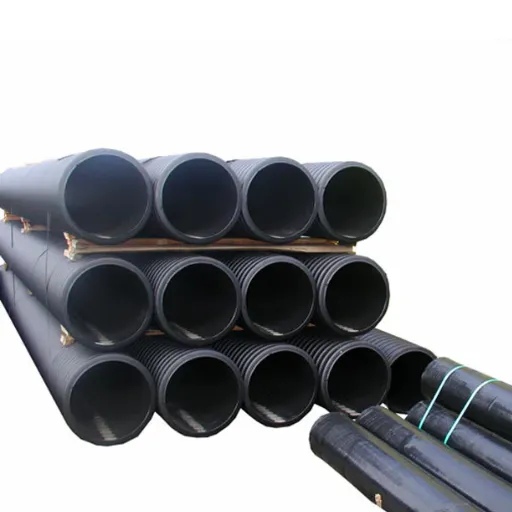
Performance Comparison: HDPE vs. Concrete
In comparison to concrete, HDPE offers several advantages, including greater flexibility, lighter weight, faster installation, superior leak resistance, longer lifespan, and better corrosion resistance. Concrete, on the other hand, is better in terms of strength and its ability to bear loads.
| Aspect | HDPE | Concrete |
|---|---|---|
| Adaptability | High | Low |
| Mass | Light | Heavy |
| Setup Speed | Fast | Slow |
| Sealing | Leakproof | Prone to leaks |
| Durability | 100 years | 50 years |
| Resistance | Corrosion-free | Corrosion-prone |
| Robustness | Moderate | Superior |
| Expense | Cost-effective | Expensive |
Cost Analysis: HDPE vs. PVC Pipes
Although HDPE pipes require a higher initial investment, they are more cost-effective over time because of their durability, flexibility, and low maintenance requirements. In contrast, PVC pipes might be more affordable to purchase, but they are likely to be more expensive over their life span.
| Aspect | HDPE | PVC |
|---|---|---|
| Initial Cost | Higher | Lower |
| Durability | 50+ years | 25-40 years |
| Flexibility | High | Low |
| Installation | Faster | Slower |
| Maintenance | Minimal | Moderate |
| Leakage | None | Possible |
| Environmental | Recyclable | Toxic disposal |
| Applications | High-pressure | Low-pressure |
Lifespan and Reliability Considerations
As concerns the lifespan of PVC and HDPE pipes, the latter offers a number of unique benefits, while also presenting certain drawbacks. Provided that HDPE pipes undergo proper maintenance and are put in the ground under best practices, HDPE pipes can last as long as 100 years as a result of their resistance to corrosion, chemical, and environmental wear and tear. As it is best known to have a lifespan of 50 years, PVC is a widely opted for pipe material as a result of its exposure to temperature change and, to a chemical aggressor, which limits its wear and tear.
HDPE Advantages
- Unique flexibility properties
- Leakproof characteristics
- Crack and stress resistant
- Seamless joining methods
- Suitable for shifting environments
- Heavy load resistance
PVC Characteristics
- Structurally strong but rigid
- More prone to cracking under stress
- Less flexible design
- Lower weight-impact resistance
- More cost-effective initially
- Suitable for short-term projects
Considering both the lifespan and dependability of the materials, I would opt to use HDPE pipes for any projects that require strong resistance for an extended period with very low maintenance, unlike PVC, which is less costly to maintain but less reliable over time. HDPE pipes are more than able to deal with environmental pressures, which makes them more cost-effective. This ensures their preferred use in critical infrastructure projects. HDPE pipes are truly the best option for projects that require superior reliability and long-term performance, whereas PVC is still feasible for short and moderate-term projects.
Frequently Asked Questions (FAQ)
References
- A Research Plan and Factors Affecting Service Life for Culvert Pipe Materials in Minnesota – This University of Minnesota study investigates material selection and service life forecasting for HDPE pipes.
- Analyzing Field Performance of Steel-Reinforced HDPE (SRHDPE) Pipes During Installation and Under Traffic Loading – Publications from KU ScholarWorks focus on the comparison of HDPE and steel pipes under different conditions.
- Service Life Assessment of Culverts in Ohio – This thesis from OhioLINK focuses on the evaluation of the service life of HDPE, concrete, and steel culverts.
- A Research Plan and Report on Factors Affecting Culvert Pipe Service Life in Minnesota – This is yet another in-depth study conducted at the University of Minnesota focusing on HDPE pipe service life and the relevant materials.
Ready to Choose HDPE Culvert Pipes?
HDPE culvert pipes offer unmatched durability, cost-effectiveness, and environmental benefits for your drainage systems. Make the smart choice for your next infrastructure project.



